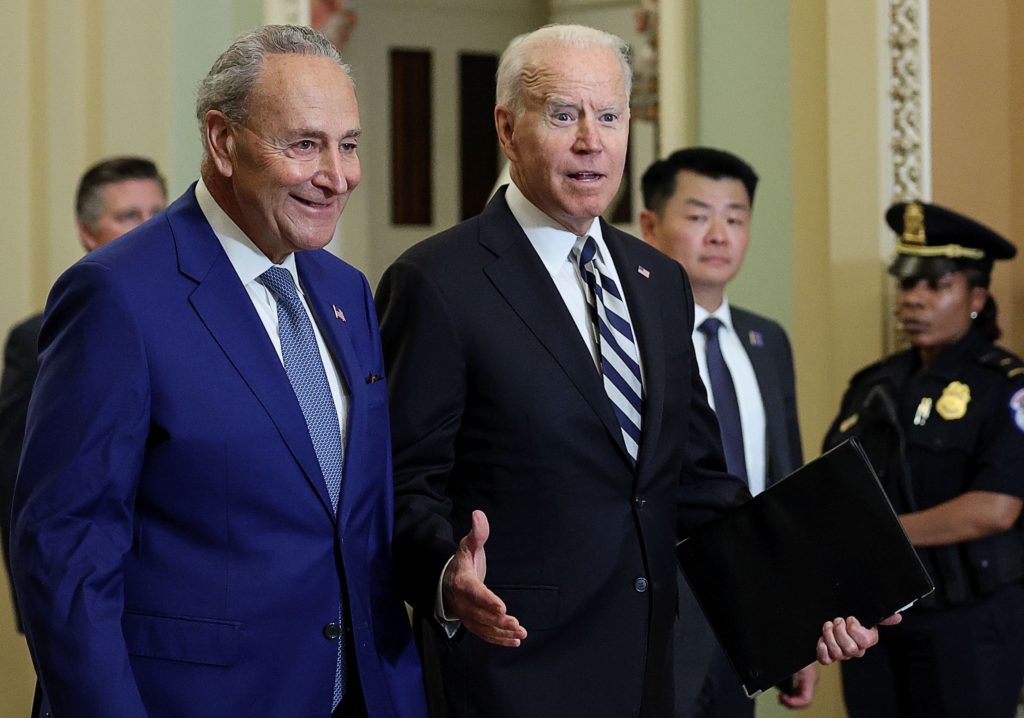Lisa Desjardins:
If our viewers take anything away from this conversation that you and I have, I want them to understand there are two different bills here moving at the same time.
And, politically, they’re different, but they’re connected. Let me go through those. First of all, to start with that budget agreement, we just talked about that big, historically, perhaps largest spending deal we will ever see in American history.
You look at the size of that, say if it was depicted in a circle, $3.5 trillion, that’s the budget agreement. Now, compare that to the infrastructure deal that’s also being worked out separately, $1 trillion, smaller, but also relatively large historically.
Now, the budget agreement, that is something that is going to be partisan in nature, vs. the infrastructure deal, which is going to be bipartisan. That needs Republican support to pass the Senate vs., again, the budget agreement, which will likely pass with only Democratic votes through the process called reconciliation.
Basically, Judy, the issue is, they’re trying to navigate both of these bills at one time, so that people who think, say, the big Democratic $3 trillion bill is too big, they might like the smaller infrastructure bill.
By having these move at the same time, they’re trying to leverage votes on both sides and trying to thread a very tricky needle. They also have to get both of these things through the House. There are 531 members of Congress, Judy, so that’s 531 ways this thing could fall apart.
But it’s come much farther than most people think. So there is hope for both of these Democratic proposals and bipartisan proposals right now.













































